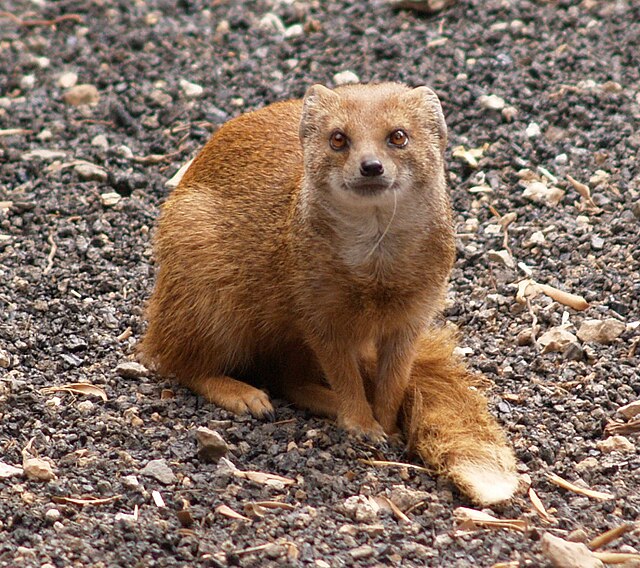The meerkat or suricate is a small mongoose found in southern Africa. It is characterised by a broad head, large eyes, a pointed snout, long legs, a thin tapering tail, and a brindled coat pattern. The head-and-body length is around 24–35 cm (9.4–13.8 in), and the weight is typically between 0.62 and 0.97 kg. The coat is light grey to yellowish-brown with alternate, poorly-defined light and dark bands on the back. Meerkats have foreclaws adapted for digging and have the ability to thermoregulate to survive in their harsh, dry habitat. Three subspecies are recognised.
Meerkat
Illustration of meerkats by Robert Jacob Gordon (1777)
Close view of a meerkat. Note the banded pattern, the big eye circles and the thin tail.
The sharp, curved foreclaws are adapted for digging.
A mongoose is a small terrestrial carnivorous mammal belonging to the family Herpestidae. This family is currently split into two subfamilies, the Herpestinae and the Mungotinae. The Herpestinae comprises 23 living species that are native to southern Europe, Africa and Asia, whereas the Mungotinae comprises 11 species native to Africa.
The Herpestidae originated about 21.8 ± 3.6 million years ago in the Early Miocene and genetically diverged into two main genetic lineages between 19.1 and 18.5 ± 3.5 million years ago.
Image: Herpestes ichneumon Египетский мангуст, или фараонова крыса, или ихневмо́н
Image: Marsh mongoose or water mongoose, Atilax paludinosus, at Rietvlei Nature Reserve, Gauteng, South Africa (22548192738)
Image: Fuchsmanguste 2
Image: Urva urva 77938111








